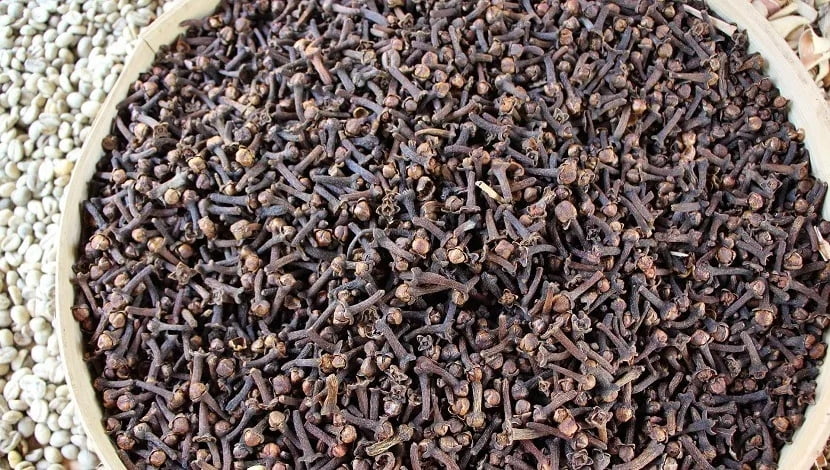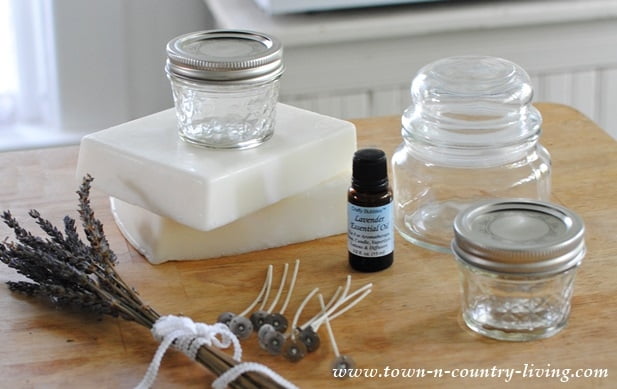Are you interested in making your own candles at home but unsure of which wax to use? Choosing the right wax is essential for creating high-quality candles that burn evenly and emit a pleasant fragrance.
In this article, we will explore the various options available for candle making and discuss the benefits and properties of each type of wax. Whether you prefer natural waxes like soy or beeswax, or are curious about paraffin, coconut, or blended waxes, this comprehensive guide will help you make an informed decision on which wax is best for your candle making needs.
When it comes to candle making, selecting the appropriate wax is crucial for achieving the desired results. Each type of wax has its own unique characteristics and properties that can significantly impact the performance and appearance of the finished product. From burn time to scent throw, the choice of wax plays a key role in determining the overall quality of your candles.
So, which wax is good for candle making? Let’s delve into the world of candle wax to find out.
In the following sections, we will take an in-depth look at popular options such as soy wax, paraffin wax, beeswax, coconut wax, and blended waxes. We’ll examine their individual advantages and disadvantages, as well as discuss important factors to consider when choosing a wax for your candle making projects.
Whether you’re a beginner looking to start your candle making journey or an experienced crafter seeking to expand your repertoire, understanding the importance of selecting the right wax is essential for creating beautiful and long-lasting candles.
Natural Waxes
Benefits of Soy Wax
Soy wax has gained popularity in recent years due to its numerous benefits. One of the key advantages of soy wax is its sustainability. Soy wax is derived from soybean oil, making it a renewable and eco-friendly option for candle making. In addition, soy wax burns cleaner and slower than other waxes, resulting in a longer-lasting candle with minimal soot and smoke.
Another benefit of soy wax is its ability to hold fragrance oils effectively. This means that soy wax candles can offer a strong and long-lasting scent throw, providing a pleasant aroma throughout the entire burn time. Furthermore, soy wax is biodegradable, making it an environmentally conscious choice for consumers who are mindful of their ecological footprint.
Properties of Soy Wax
Soy wax has unique properties that make it ideal for candle making. It has a lower melting point compared to other waxes, which allows for a more even and consistent burn. This also makes it easier to work with when creating homemade candles. Additionally, soy wax has excellent glass adhesion, resulting in a smooth and clean appearance when poured into containers.
Moreover, soy wax is known for its versatility in terms of color and fragrance absorption. It can hold a high percentage of fragrance oils, allowing for customized scents to be added to the candles. The natural creamy color of soy wax also lends itself well to dyeing, giving crafters the option to create vibrant or pastel-colored candles according to their preference.
In summary, soy wax offers several advantages which make it an excellent choice for candle making. Its sustainability, clean-burning properties, fragrance retention capabilities and ease of use make it a popular option among both hobbyists and professional candle makers alike.
Paraffin Wax
Pros of Paraffin Wax
Paraffin wax is a popular choice for candle making due to its affordability and accessibility. It is also known for its ability to hold a strong scent, making it ideal for scented candles. Additionally, paraffin wax has a high melting point, which allows candles made from this type of wax to burn longer compared to other waxes.
Another advantage of paraffin wax is that it can easily be colored using dyes, giving candle makers the flexibility to create vibrant and eye-catching candles. This makes it a great option for those who want to add an aesthetic appeal to their candles.
Cons of Paraffin Wax
Despite its popularity, paraffin wax does have some downsides which should be taken into consideration. One major drawback is that paraffin wax is derived from petroleum, which raises concerns about its impact on the environment. The production and use of paraffin wax may contribute to air pollution and greenhouse gas emissions, making it less environmentally friendly compared to natural waxes such as soy or beeswax.
Moreover, some people may have concerns about the potential health risks associated with burning paraffin wax candles. When paraffin wax is burned, it releases harmful chemicals such as benzene and toluene into the air, which could pose health hazards when inhaled.
When considering the pros and cons of using paraffin wax for candle making, it is essential for individuals to weigh their options based on their specific needs and preferences. While paraffin wax offers several advantages in terms of affordability and performance, its environmental and health impacts should not be overlooked. Therefore, individuals should carefully consider these factors when choosing the right type of wax for their candle making projects.
Ultimately, the decision on whether or not to use paraffin wax will depend on various factors such as one’s values, priorities, and considerations for sustainability and health.
Beeswax
One of the key benefits of using beeswax for candle making is its long burn time. Beeswax candles burn longer than other types of candles, making them an economical choice for both personal use and commercial production. Additionally, beeswax is also known for its clean-burning properties, as it does not produce soot or smoke which can be harmful to indoor air quality.
In addition to its burning properties, beeswax is also valued for being a renewable resource and environmentally friendly. It is biodegradable and non-toxic, making it a sustainable choice for eco-conscious consumers. Beeswax can also be easily blended with other waxes such as soy or coconut wax to create custom candle formulations that combine the best properties of each wax type. All these qualities make beeswax a highly sought-after material in the candle making industry.
| Benefits of Beeswax | Properties |
|---|---|
| Long burn time | Natural honey aroma |
| Clean-burning | Renewable resource |
| Sustainable and eco-friendly | Can be blended with other waxes |
Coconut Wax
When it comes to candle making, coconut wax offers several benefits that make it a desirable choice. Here are some key reasons why coconut wax is a sustainable and clean option for candle making:
- Clean Burning: Coconut wax burns cleanly, producing minimal soot and smoke which makes it a great choice for those who are concerned about indoor air quality.
- Sustainable Sourcing: Coconut wax is derived from a renewable resource, making it an eco-friendly option for environmentally conscious candle makers.
- Long Lasting: Candles made with coconut wax tend to have a longer burn time compared to other waxes, providing extended enjoyment for candle enthusiasts.
In addition to its eco-friendly properties, coconut wax also has excellent fragrance retention, allowing for a strong and long-lasting scent throw in candles. This makes it an attractive choice for candle makers who want their creations to fill a room with delightful aromas. When considering which wax is good for candle making, coconut wax should definitely be on your list of options to explore.
Blended Waxes
When it comes to making candles, you may find that a single type of wax does not completely meet your requirements. This is where blended waxes come in. Blended waxes are created by combining two or more types of wax to achieve the desired properties for candle making. These waxes can offer the benefits of different materials while minimizing their individual drawbacks.
One common example of blended waxes is a mixture of paraffin and soy wax. This combination can provide the clean burn and strong scent throw of paraffin, along with the natural and renewable qualities of soy wax. Another popular blend is beeswax and coconut wax, which offers a longer burn time and a smoother appearance.
Factors such as fragrance retention, burning time, and aesthetic appeal play a significant role in determining which type of blended wax is suitable for your candles. Additionally, considering the availability and cost-effectiveness of the different wax types is essential when deciding on the right combination for your candle making needs.
| Blended Wax Type | Main Properties |
|---|---|
| Paraffin-Soy Blend | Clean burn, strong scent throw, natural and renewable qualities |
| Beeswax-Coconut Blend | Longer burn time, smooth appearance |
Factors to Consider When Choosing Wax for Candle Making
When choosing the best wax for your candle making needs, there are several factors to consider to ensure that you achieve the desired results. The type of wax you select will greatly impact the appearance, burn time, and fragrance throw of your candles. Here are some important factors to keep in mind when choosing wax for candle making:
1. Melting Point: The melting point of the wax will determine the temperature at which it liquefies and solidifies. This is important to consider depending on the climate in which the candles will be used. For example, a wax with a higher melting point is ideal for warmer climates as it will help prevent the candles from melting too quickly.
2. Scent Throw: Some waxes have better scent throw than others, meaning they are able to hold and release fragrance more effectively. If you plan to use fragrances in your candles, it’s important to choose a wax that is known for its excellent scent throw.
3. Clean Burning: Consider how clean the wax burns when selecting a type for your candles. Clean-burning waxes produce minimal soot and smoke, creating a healthier environment for both indoor and outdoor use.
4. Sustainability: If sustainability is an important factor for you, consider choosing waxes like soy or coconut wax which are renewable resources and have minimal impact on the environment.
5. Cost: Finally, consider the cost of the wax as it relates to your budget and pricing strategy for your candles.
Taking these factors into consideration will help you make an informed decision about which wax is good for candle making based on your specific needs and preferences. Whether you prioritize clean burning properties, eco-friendliness, or cost-effectiveness, there is a wax option available that aligns with your priorities”.
Conclusion
In conclusion, selecting the best wax for your candle making needs is an important decision that can greatly impact the quality and performance of your candles. Each type of wax – soy, paraffin, beeswax, coconut, or blended – has its own unique benefits and properties that you should carefully consider before making a choice.
When deciding which wax is good for candle making, it’s essential to think about factors such as burn time, scent throw, color options, and sustainability. For example, soy wax is known for its clean burn and excellent scent throw, making it a popular choice for many candle makers. On the other hand, beeswax offers a natural alternative with a sweet honey aroma and longer burn time.
Additionally, experimenting with different blends of waxes can help you achieve specific characteristics in your candles. By understanding these factors and considering your personal preferences and values as a candle maker, you can confidently select the best wax for creating beautiful and high-quality candles that exceed your expectations. The key is to explore the wide variety of options available to find the perfect fit for your candle making needs.
Frequently Asked Questions
What Kind of Wax Makes the Best Candles?
The best wax for candles is often considered to be soy wax or beeswax. These waxes are natural, renewable, and burn cleanly, making them popular choices for candle-making.
What Wax to Avoid in Candles?
It’s best to avoid using paraffin wax in candles. Paraffin is derived from petroleum and can release harmful chemicals when burned, impacting indoor air quality and potentially causing health concerns.
Should I Use Paraffin or Soy Wax for Candles?
Whether to use paraffin or soy wax for candles depends on your personal preferences and values. Paraffin may be cheaper and offer a wider variety of scents, while soy wax is more sustainable and environmentally friendly. Consider what matters most to you when making your decision.

Welcome to my candle making blog! In this blog, I will be sharing my tips and tricks for making candles. I will also be sharing some of my favorite recipes.





